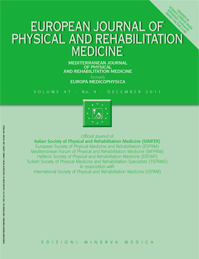
PHYSICAL THERAPY & REHAB
Dynamic lumbar exercises may improve clinical outcomes following lumbar microdiscectomy
Eur J Phys Rehabil Med. 2014 Dec;50(6):627-40.44 patients scheduled to undergo lumbar microdiscectomy were randomized to either a control group, which participated in a home-based exercise program, or a dynamic lumbar stability (DLS) group, which participated in both the home-based exercise program and a supervised dynamic lumbar stabilization exercise program. Both groups begun allocated exercise programs at 4 weeks after surgery. The purpose of this study was to determine the effects of dynamic lumbar stabilization exercises on lumbar spine surgery rehabilitation, including factors such as pain, mobility, fear avoidance beliefs and return to work, measured over 6 months after surgery. Results indicated DLS exercises significantly improved pain, disability, fear avoidance beliefs, and spinal mobility over the duration of the exercise program when compared to those who completed standard home exercises only. Nevertheless, no significant difference was observed between groups in return to work.
Unlock the full ACE Report
You have access to {0} free articles per month.Click below to unlock and view this {1}
Unlock NowCritical appraisals of the latest, high-impact randomized controlled trials and systematic reviews in orthopaedics
Access to OrthoEvidence podcast content, including collaborations with the Journal of Bone and Joint Surgery, interviews with internationally recognized surgeons, and roundtable discussions on orthopaedic news and topics
Subscription to The Pulse, a twice-weekly evidence-based newsletter designed to help you make better clinical decisions
Exclusive access to original content articles, including in-house systematic reviews, and articles on health research methods and hot orthopaedic topics
Or upgrade today and gain access to all OrthoEvidence content for just $1.99 per week.
Already have an account? Log in


Subscribe to "The Pulse"
Evidence-Based Orthopaedics direct to your inbox.
{0} of {1} free articles
Become an OrthoEvidence Premium Member. Expand your perspective with high-quality evidence.
Upgrade Now












































































